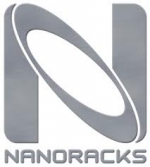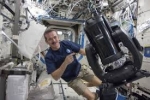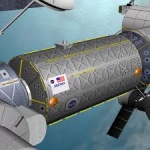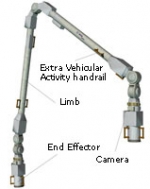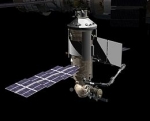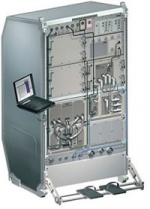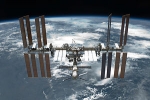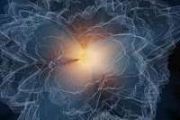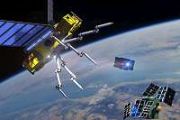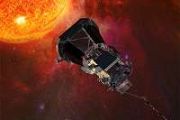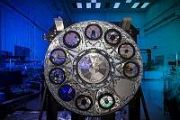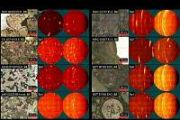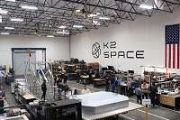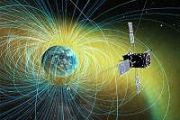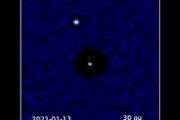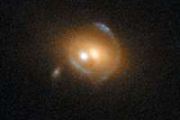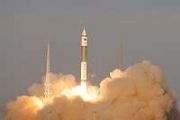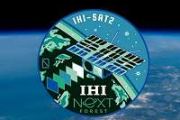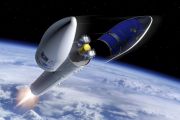Displaying items by tag: ISS
Center for the Advancement of Science in Space (CASIS)
The Center for the Advancement of Science in Space (CASIS), a nonprofit organization, is the sole manager of the International Space Station U.S. National Laboratory.
The mission of CASIS is to maximize use of this unparalleled platform for innovation, which can benefit all humankind and inspire a new generation to look to the stars.
The organization has been awarded by NASA the responsibility of inciting the imagination of entrepreneurs and scientists alike, accelerating and facilitating space-based research as well as creating public awareness of National Lab research and making space science more accessible to the world.
NanoRacks LLC
NanoRacks is a private company that provides standard rack-mounted laboratory facilities and micro-gravity space access to commercial customers at the International Space Station (ISS).
NanoRacks provides 'Plug and Play' micro-gravity research facilities allowing small standardized payloads to be plugged into any of our platforms, providing interface with the International Space Station power and data capabilities.
ISERV Pathfinder
the ISS SERVIR Environmental Research and Visualization System (ISERV) is an image acquisition installed on the ISS Destiny module to take photos of Earth from the ISS.
ISERV is a commercial camera, telescope and pointing system operated remotely from Earth by researchers at NASA's Marshall Space Flight Center in Huntsville, Ala. With ISERV NASA will be able to provide high resolution images of Earth!
Destiny (ISS module)
The Destiny laboratory is a module of the International Space Station (ISS). It is the primary operating facility for U.S. research payloads aboard the ISS.
It was berthed to the Unity module and activated over a period of five days in February, 2001. Destiny is NASA's first permanent operating orbital research station since Skylab was vacated in February 1974.
The Boeing Company began construction of the state-of-the art research laboratory in 1995 at the Marshall Space Flight Center in Huntsville, Alabama. Destiny was shipped to the Kennedy Space Center in Florida in 1998, and was turned over to NASA for pre-launch preparations in August 2000. It was launched on February 7, 2001 aboard the Space Shuttle Atlantis on STS-98.
Astronauts work inside the pressurized facility to conduct research in numerous scientific fields. Scientists throughout the world will use the results to enhance their studies in medicine, engineering, biotechnology, physics, materials science, and Earth science.
European Robotic Arm (ERA)
The European Robotic Arm (ERA) is a robotic arm to be attached to the Russian Segment of the International Space Station.
It will be the first robot arm able to work on the Russian space station segments, and will supplement the two Russian Strela cargo cranes that are already installed on the Pirs module. The ERA is designed by EADS Dutch Space unit.
Nauka / Multipurpose Laboratory Module (MLM)
Nauka (Russian: Нау́ка; lit. Science), also known as the Multipurpose Laboratory Module (MLM), (Russian: Многофункциональный лабораторный модуль, or МЛМ), will be a component of the International Space Station (ISS), funded by the Russian Federal Space Agency.
The MLM launch is currently (in Sept. 2012) scheduled for 2014.
European Drawer Rack 2
The European Drawer Rack (EDR) is a single, six-post International Standard Payload Rack (ISPR) with seven Experiment Modules (EMs), each of which has separate access to power and cooling. A Video Management Unit sends streaming video, images, and science data to Earth via the Columbus module's high-rate data link and can temporarily store 72 GB of video. The experiments are largely autonomous to minimize data transfer requirements, though the EDR can be operated remotely via telescience or in real time by the crew via a dedicated laptop. The EDR has two different types of EMs: the standard International Space Station locker and the standard eight panel unit International Subrack Interface Standard (ISIS) drawer.
EDR is a multi-user facility on-board the International Space Station that accommodates a variety of science experiments. It is located in the Columbus Laboratory module and was developed for the European Space Agency by Alenia Spazio, a subsidiary of Thales Alenia Space. Like other payload racks in the station, the physical characteristics of EDR conform to the International Standard Payload Rack specification.
Node2&3 (ISS modules)
[To be edited: Objectives, missions, functions]
Node 2 & Node3 are two major components of the ISS international Space Station
node 1: Unity module
node 2: Harmony module
node 3: Tranquility module
Kibo (ISS module)
The Japanese Experiment Module (JEM), also known with the nickname Kibo (きぼう Kibō, Hope), is a Japanese science module for the International Space Station (ISS) developed by JAXA.
It is the largest single ISS module. The first two pieces of the module were launched on space shuttle missions STS-123 and STS-124. The third and final components were launched on STS-127.
International Space Station (ISS)
The International Space Station (ISS) is a habitable artificial satellite in low Earth orbit. It follows the Salyut, Almaz, Skylab and Mir stations as the ninth space station to be inhabited. The ISS is a modular structure whose first component was launched in 1998. Like many artificial satellites, the station can be seen from Earth with the naked eye. The ISS consists of pressurised modules, external trusses, solar arrays and other elements. ISS components have been launched by American Space Shuttles as well as Russian Proton and Soyuz rockets. Budget constraints led to the merger of three space station projects with the Japanese Kibō module and Canadian robotics. In 1993 the Soviet/Russian Mir-2, the American Freedom, and the European Columbus, merged into a single multi-national programme. The Russian Federal Space Agency plans to separate some of its modules from the Russian segment to form theOPSEK facility before the remainder of the station is deorbited.
The ISS serves as a microgravity and space environment research laboratory in which crew members conduct experiments in biology, human biology, physics, astronomy, meteorology and other fields. The station is suited for the testing of spacecraft systems and equipment required for missions to the Moon and Mars.
The station has been continuously occupied for 11 years and 121 days having exceeded the previous record of almost 10 years (or 3,644 days) held by Mir, in 2010. The station is serviced by Soyuz spacecraft,Progress spacecraft, the Automated Transfer Vehicle, the H-II Transfer Vehicle, and formerly the Space Shuttle. It has been visited by astronauts and cosmonauts from 15 different nations.
The ISS programme is a joint project between five participating space agencies, the American NASA, the Russian RKA, the Japanese JAXA, the European ESA, and the Canadian CSA. The ownership and use of the space station is established by intergovernmental treaties and agreements. The station is divided into two sections, the Russian orbital segment (ROS) and the United States orbital segment(USOS), which is shared by many nations. The ISS is maintained at an orbital altitude of between 330 km (205 mi) and 410 km (255 mi). It completes 15.7 orbits per day. The ISS is expected to remain in operation until at least 2020, and potentially to 2028.


